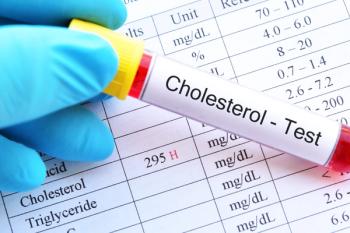
Scientists Uncover Structure of the Enzyme Telomerase
Process responsible for cancer cell proliferation uncovered.
Process responsible for cancer cell proliferation uncovered.
Researchers at the University of California at Santa Cruz have demystified the structure of a key part of the enzyme telomerase, which is responsible for cell proliferation, especially in cancer cells.
The new findings reveal how the enzyme carries out a vital function involved in protecting the ends of chromosomes. Telomeres are repetitive DNA sequences at the ends of chromosomes and serve as protective caps.
As cells divide, the telomeres attached to them get progressively shorter in size, and eventually the cells will cease to divide. The telomerase enzyme serves to lengthen the telomeres by adding to the DNA sequence.
This is an active part of stem cells and other types of cells that need to proliferate indefinitely, but is also found in 90% of malignant tumors.
“Since the discovery of telomerase and its over-activation in cancers, people have recognized the huge therapeutic potential for anticancer drugs that target telomerase. But there still is no such drug in the clinic, and part of the reason is our lack of understanding of the detailed structure of the enzyme,” said Michael Stone, associate professor of chemistry and biochemistry at UC Santa Cruz and senior author of the paper.
Telomerase is unusual because it is comprised of a protein component, as well as an RNA component. The protein is called a reverse transcriptase, which is responsible for making DNA copies of RNA sequences.
The RNA component provides the template that the enzyme copies to generate the telomere DNA sequence.
“The template is the track that the enzyme train runs along, and what’s so unique with telomerase is that the track is an integral component of the enzyme itself,” Stone said.
The enzyme repeatedly copies the same short segment of RNA template to generate the repetitive DNA of the telomere. A mystery to scientists has been exactly how the copied sequence is so precisely defined, especially since it is such a small segment of the much larger telomerase RNA.
Stone and his team demystified this in part for scientists as their findings explain how the boundary of the template is defined by the interplay between the protein and RNA components of the telomerase.
Basically, the binding domain tethers one end of the RNA so that only a defined sequence can permeate the active site of the enzyme where copying occurs. As the copying takes place, the enzyme pulls the RNA through the active site until there is no more slack left.
At this point, the molecules pull against one another, with the binding domain pulling against the reverse transcriptase, which stops the movement of RNA into the active site.
“The reverse transcriptase is pulling on the RNA, but the structural resistance of the RNA binding domain prohibits the movement of more RNA, and that’s how the template boundary is defined,” Stone said.
The enzyme then repeats the process by resetting to the beginning of the template. Stone’s team illustrated that the section of RNA tethered to the protein forms a structure called the RNA stem loop, and a protein structure in the binding domain is wedged into the base of the RNA stem, securing it into place.
“Our model is consistent with the findings of other studies of telomerase and directly reveals the functional mechanism involved,” Stone said. “What makes this interesting for rational drug design is that template boundary definition is a very specific feature of telomerase. Our cells are full of other kinds of polymerase enzymes, so it’s important to design a drug that targets only telomerase.”
Newsletter
Stay informed on drug updates, treatment guidelines, and pharmacy practice trends—subscribe to Pharmacy Times for weekly clinical insights.


















































































































































































































